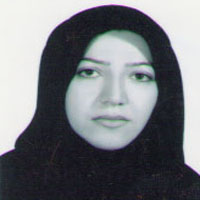Evaluation of Performance of Support Vector Machine Algorithm in Landslide Susceptibility Zoning in Ahar-chai Basin
Landslides are one of the most important geological hazards worldwide (Chen et al., 2018). Despite advances in science and technology, these events continue to result in economic, human, and environmental losses worldwide (Alimohammadlou, Najafi, & Yalcin, 2013). Globally, landslides cause about 1200 deaths and 3.5 billion dollars of loss each year (Zhang, Han, Han, Li, Zhang, & Wang, 2019). About 66 million people live in landslide-prone areas (Chen et al, 2018). Landslide susceptibility (LS) mapping is essential in delineating landslide prone areas in mountainous regions. Landslide susceptibility is the propensity of soil or rock to produce various types of landslides (Chalkias Ferentinou, & Polykretis, 2014). From the beginning of the 1970s, the interest of both geoscientists and engineering professionals in LS zonation and the increasing emphasis on the use of Geographic Information Systems (GIS) technology led to the development of many methods such as weights-of-evidence model (Karami, 2012; Wang, Guo, Li, He, & Wu, 2019) logistic regression (Pham, Pradhan, Bui, Prakash, & Dholakia, 2016; Raja, Çiçek, Türkoğlu, Aydin, & Kawasaki, 2017), artificial neural networks (Chauhan, Sharma, Arora, Gupta, 2010؛ Tsangaratos & Benardos, 2014), neuro-fuzzy (Aghdam, Varzandeh, & Pradhan, 2016; Lee, Hong, & Jung, 2017; Chen et al., 2019). Support vector machines model (SVM) is currently a new pattern recognition method based on statistical learning theory, which shows unique advantages in solving small sample, nonlinear and high dimensional pattern recognition problem (Yao, Tham, & Dai, 2008).Iran has vast mountainous areas that make up more than half of the country due to geological characteristics, seismicity, rainfall and climate change and topographic conditions are among the countries that have experienced numerous landslides. In the meantime, Aharchai basin is located in northwest of Iran. This basin is prone to landslide due to topographic and geological conditions, slopes and other factors. Such conditions reveal the necessity of zoning sensitivity and assessing the potential for landslides in planning and implementing development plans. In this study, SVM model and GIS technology are applied to the evaluation of the susceptibility of landslides for the Ahar-Chai Basin. In addition, the purpose of this study is to evaluate the performance of support vector machine algorithm functions.
Support Vector Machine (SVM) is currently a new pattern recognition method based on statistical learning theory, which shows unique advantages in solving small sample, nonlinear and high dimensional pattern recognition problems (Yao et al, 2008). SVM was first proposed by Vapnik (1995). Landslide inventory mapping is an important step in landslide susceptibility assessment. In this study, historical records, satellite images, field surveys, and Google Earth® were used to analyze landslide locations. Landslide conditioning factors used in the current study are slope angle, slope aspect, altitude, valley depth, NDVI, rainfall, distance to rivers, lithology, distance to faults, land use, topographic wetness index (TWI), stream power index (SPI), plan curvature, and profile curvature. Using this DEM, slope degree, slope aspect, altitude, plan curvature, profile curvature, were produced. In this study, a Landsat/ETM+ satellite image and sentinell were used for the year 2017. The plan curvature map was produced using a system for automated geoscientific analyses (SAGA) GIS. In this research, a support vector machine with four types of kernel classifiers such as linear, polynomial, radial basis function (RBF) and sigmoid were used in GIS for landslide susceptibility mapping in the study area. A total of 200 landslides were mapped using satellite image and subsequently were verified through field checking. Validation is an essential part of landslide susceptibility and landslide susceptibility maps are meaningless without validation. At present, the area under curve (AUC) method is used by most scholars in the prediction capability of a landslide susceptibility model. The AUC displays the success rate and prediction rate percentage of the model and is obtained for both the training data and the validation data. In general, the larger the AUC value, the better is the model (Intarawichian & Dasananda 2011; Lee and Dan, 2005).
In this study, using the 70% of the landslides as training dataset, the success rate curve was drawn. Using the remaining 30% of the landsides as testing dataset, the prediction rate curve was also drawn. Susceptibility maps were verified and compared using the area under the curve (AUC) method. The success rate curve demonstrated that the AUC for the radial basis, sigmoid, polynomial and linear functions was 0.988, 0.938, 0.652 and 0.506, respectively, and the prediction rate curve showed that the AUC was 0.958, 0.928, 0.642 and 0.543, respectively. Furthermore, results showed that RBF function had the highest accuracy in comparison with other methods. Generally, the three methods showed reasonable accuracy in landslide susceptibility mapping. Results of this study can serve as guidelines to managers and policy makers regarding the prevention and mitigation of landslide hazards. Finally, the landslide susceptibility maps were reclassified into five susceptibility classes: very high, high, moderate, low and very low.
The validation results showed that success rates for four types of function models varied from 98% to 50%. Similarly, results of prediction rates showed that RBF (98%) and sigmoid (93%) functions performed better than other types of functions (polynomial = 65%, and linear = 50%). The result of zonation show that 26.61 % of study area were located in high and very high susceptibility classes.
- حق عضویت دریافتی صرف حمایت از نشریات عضو و نگهداری، تکمیل و توسعه مگیران میشود.
- پرداخت حق اشتراک و دانلود مقالات اجازه بازنشر آن در سایر رسانههای چاپی و دیجیتال را به کاربر نمیدهد.



